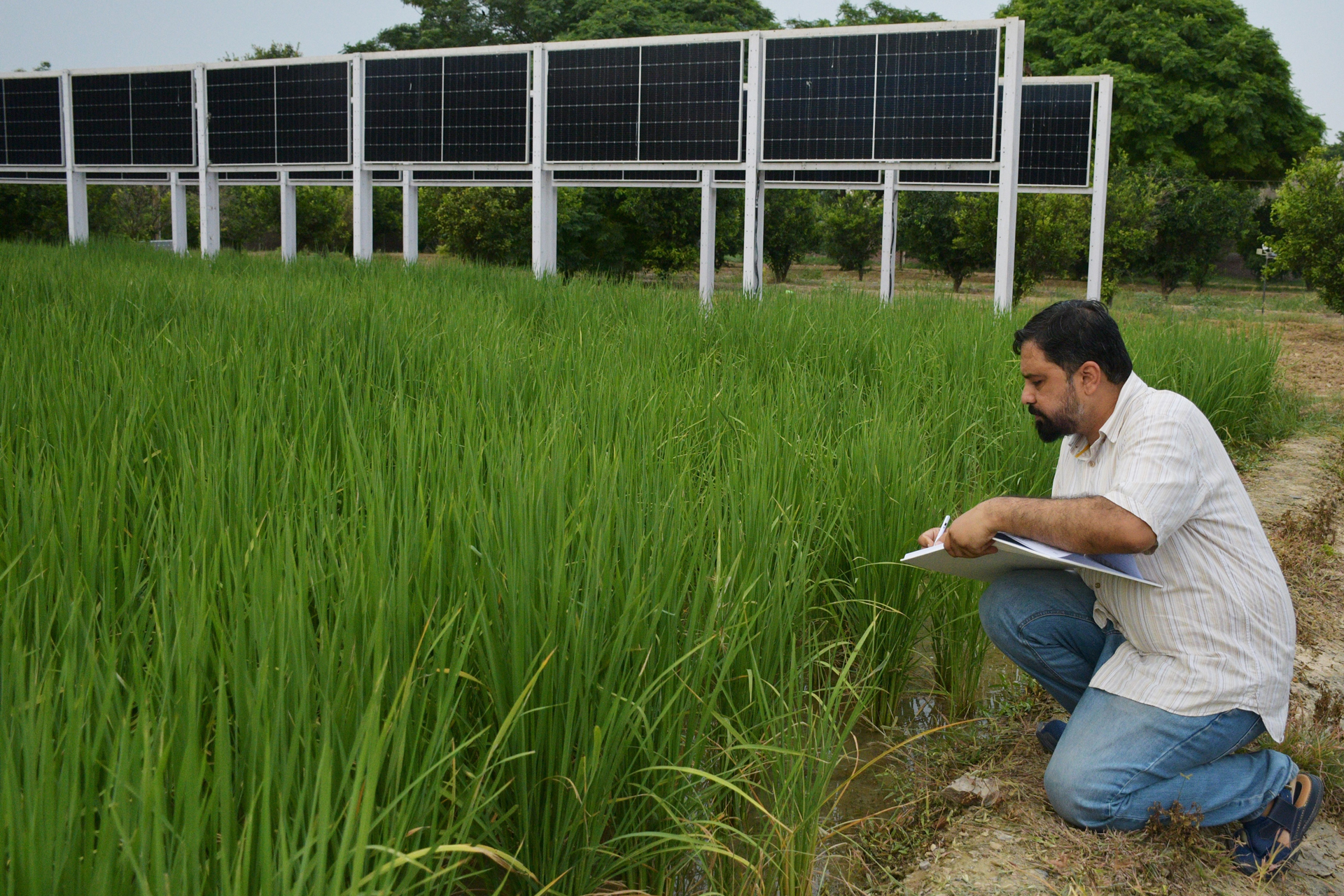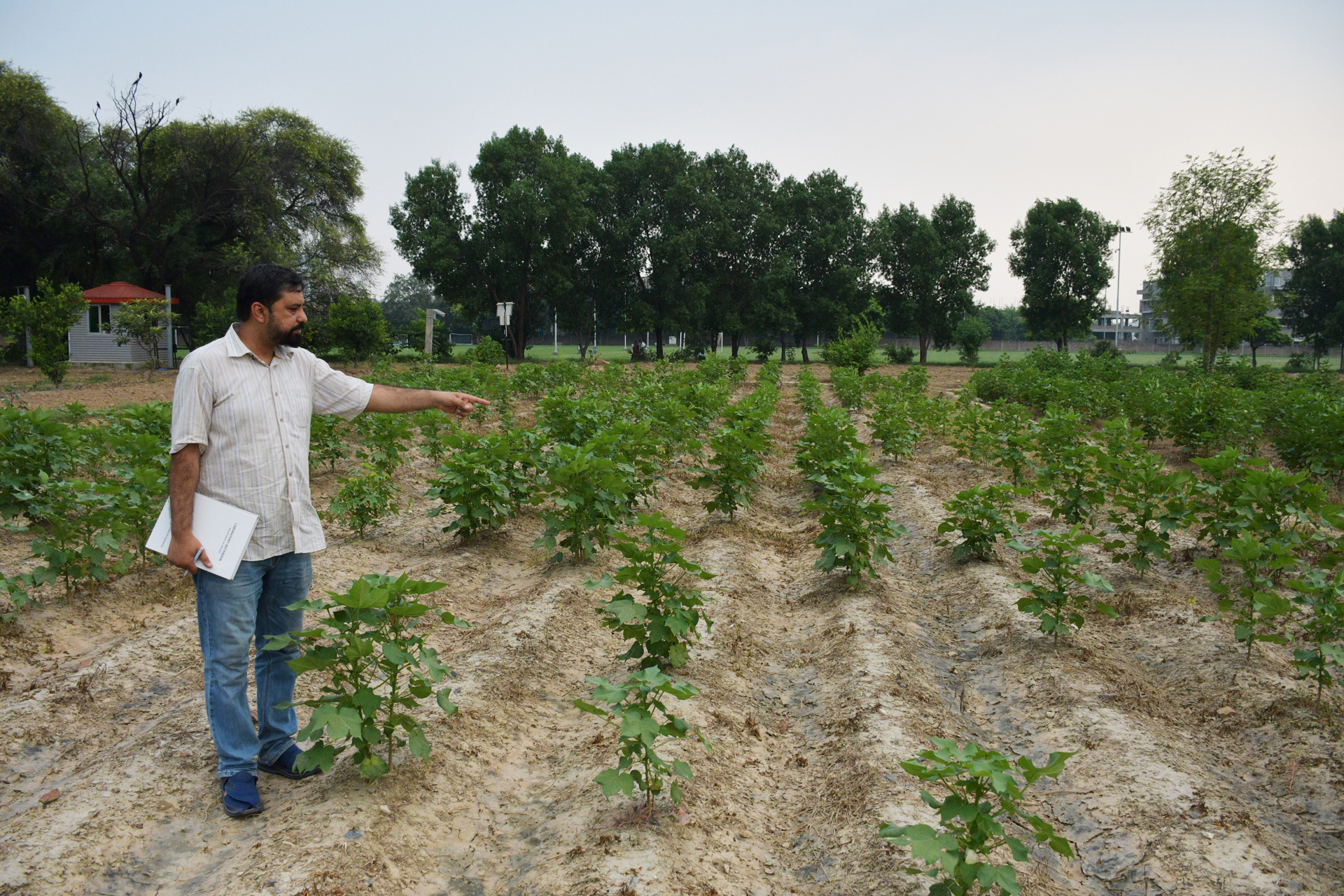The LUMS Agriculture team comprises of Dr. Abubakr Muhammad (Electrical Engineering), Dr. Khurram Bashir (Life Sciences), Dr. Muhammad Tariq (Life Sciences), Dr. Zaigham Shahzad (Life Sciences), Dr. Mian Muhammad Awais (Computer Science) and Dr. Murtaza Taj (Computer Science).
Following are a few examples of work that has been conducted at Syed Babar Ali School of Science and Engineering in the field of agriculture.
Robotic Crop Phenotyping TestbedTo meet the food demands of increasing global population, it is essential to make advancements in the field of genomics and plant phenotyping to explore novel traits in plants. This would require developing automated phenotyping methods which are efficient, and less prone to human error and bias. This robotic platform, equipped with a diverse set of sensors, enables it to gather a rich data set of essential parameters required for digital phenotyping.
For more information visit: https://wit.lums.edu.pk/node/12025 |
Plant BiotechnologyThe Laboratory of Plant Biotechnology, Department of Life Sciences, SBASSE, LUMS is enthusiastic to discover the molecular mechanisms governing the abiotic stress response in plants. Our group is working on developing drought-tolerant transgenic cotton plants through engineering metabolic pathways (GM-Technology), and the use of metabolic priming for mitigating the effects of drought stress (Non-GM-Technology). We are also committed to developing healthier food options through the enrichment of Fe and other essential minerals in seeds while reducing the toxic chemicals in food. Additionally, we are interested in plant phenotyping to screen germplasm for desirable traits. Our focus is to transfer technology from the lab to the field and we employ integrated strategies and approaches to simulate the agricultural practices to help the national and international agricultural sectors.
Website: http://biolabs.lums.edu.pk/plants |
Agrivoltics Research TestbedAgrivoltaics is a novel approach to Agri and solar farming for Sustainable Agriculture by simultaneous use of land for solar photovoltaic power generation and agriculture. This results in a mutually beneficial symbiotic relationship where the solar panels and the crops benefit because they help each other perform better. The coexistence of solar panels and crops implies a sharing of light and land resources requiring a tradeoff on crop yield, crop quality, and energy production and optimizing for a positive cumulative impact of the two operations. The research team uses Agrivoltaic Research Testbed to monitor microclimatic conditions, PV panel temperature, soil moisture, irrigation water use, plant ecophysiological function, and plant biomass production and compares it with traditional PV installations and agricultural settings to quantify tradeoffs. The food, energy, and water systems are highly vulnerable to climate change, and the research will impact on building resilience and ensuring the sustainability of the energy and food production. For more information visit: http://wit.lums.edu.pk/node/12025 |
Regenerative AgricultureRegenerative Agricultural Practices (RAP) technology aims at massively reducing the cost of production in the cultivation of wheat and increasing net profit for farmers without compromising crop health and quality. Driven by the need to minimize the environmental impact of agricultural activity, RAP is an emerging technology that relies on practices that regenerate soil health by enhancing microbial activity and consequent soil texture. Some of the key features of these practices include:
Precision seeding LUMS investigation in the RAP aims to answer the molecular basis of regenerative agriculture and to address the grand challenge of whether smallholder farmers in Pakistan have a sustainable future in the face of industrial-era technologies in agriculture (i.e., mechanization, chemicalization, digitization, etc.)
|
Agriculture Field Stations at LUMS
Two years ago, a multidisciplinary team of LUMS electrical engineers, biologists, computer scientists, hydrologists, and economists, initiated an experiment on smart, regenerative agriculture in a corner of the LUMS campus. The experiment was aimed at benefitting small farmers in developing countries. The idea is to regenerate soil health, grow crops with the least chemical imprint, and enhance water use efficiency. Wheat and rice crops were cultivated without tilling on permanent raised beds which were covered with biological waste as mulch. After two seasons, the project team has produced promising results by significantly reducing input costs, eliminating pesticides and chemical fertilizers, and using only a third of the water. The average net income from the wheat planted on beds was Rs. 42022/acre, whereas it was Rs. 42864/acre for the conventional puddled field. Therefore, planting wheat and rice on beds has a high potential of saving water without compromising the big losses in yield. From an ecological and international business perspective, such approaches create prototypes for value-added green interventions that can be scaled up for earning carbon credits and adapting to climate change.

On the same farm, the team has also established a state-of-the-art digital phenotyping facility that allows researchers to track plant heights, chlorophyll content, canopy temperatures, soil moisture, and other important variables at unprecedented scales. Commercial spinoffs of these technological advancements have come in the form of ICT-powered water conservation gadgets that are saving millions of liters of water at hundreds of farms around the country. Scientific spinoffs of this collaborative work have resulted in studies on catchments in the snow-packed north of Pakistan. In Swat, Mianwali, and Skardu, the team has installed and maintained a network of low-cost weather, streamflow, and cryosphere monitoring stations that are providing valuable information on climate change, early warning about flash floods, and use cases for the digital inclusion of remote communities. These technological and scientific innovations are also evaluated as policy options for large-scale adoption. The WIT center has developed integrated assessment models for the climate-water-energy-food nexus in the four countries comprising the Indus River basin (Pakistan, India, Afghanistan, and China). Policy-driven scenarios of investment options can be played over decades in such models in the wake of socio-economic and climate change. As an example, one study computes that the SDG targets for the entire basin can be attained by an additional 15% investment over the business-as-usual case. Most of this additional cost can be met if the countries decide to cooperate over cropping patterns, energy markets, and river waters. Similarly, another study shows how to balance investments between supply-driven solutions (e.g. storage dams) and demand management (e.g. smart irrigation).
